Since ancient times, people have known about some rocks that could attract iron. When these rocks were rubbed on other types of metal, they had the power to make them attractive too. These items could also push each other away, repelling each other.
This force of attraction and repulsion is called magnetism.
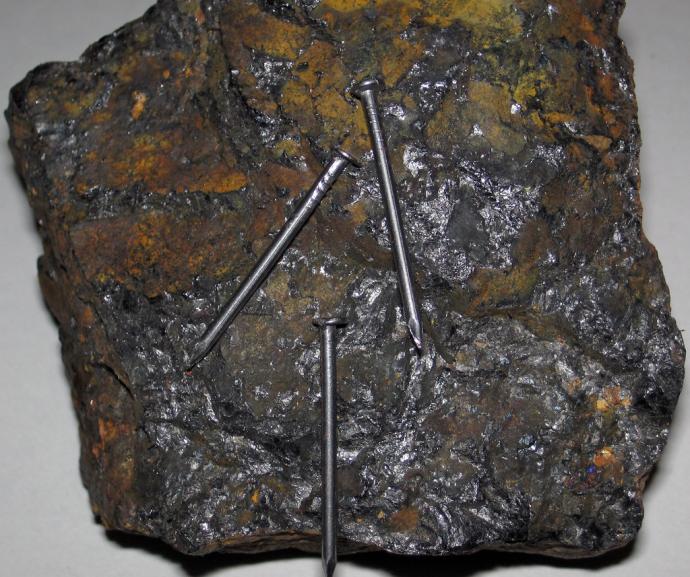
- Magnetic Poles
Ancient Chinese thinkers figured out that a magnetic needle in water would always move to the same position. It would line up from north to south. This discovery led to the invention of the compass, which has been used ever since to help people find their way. The reason this works is that the Earth itself is a giant magnet.
All magnets have north and south poles, just like the Earth. North and south poles (opposites) are attracted to each other, whereas like poles (north-north or south-south) push each other away.
- Magnetic Field
Magnetism extends out beyond the magnetic object. This is called a magnetic field. The closer to the magnet, the stronger the force.
When 2 of the same poles come close together, they don't even need to touch before they push away from each other. When 2 opposite poles come near each other, they can pull themselves together before they touch.
Magnetic field lines show the shape of the field around different magnets. It flows out of one pole and into the other.
Image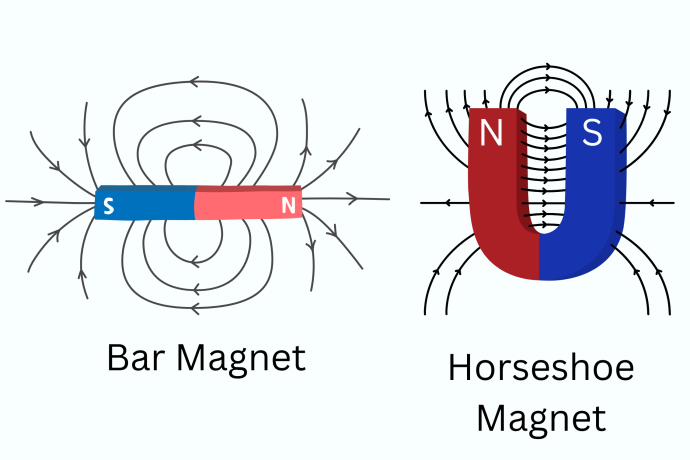 CreditThis work by The Schools' Observatory is licensed under All rights reserved
CreditThis work by The Schools' Observatory is licensed under All rights reservedComparison of the magnetic fields around a bar magnet and a horseshoe magnet. We can see this field with a bar magnet in the classroom using iron filings which line up with the field.
Image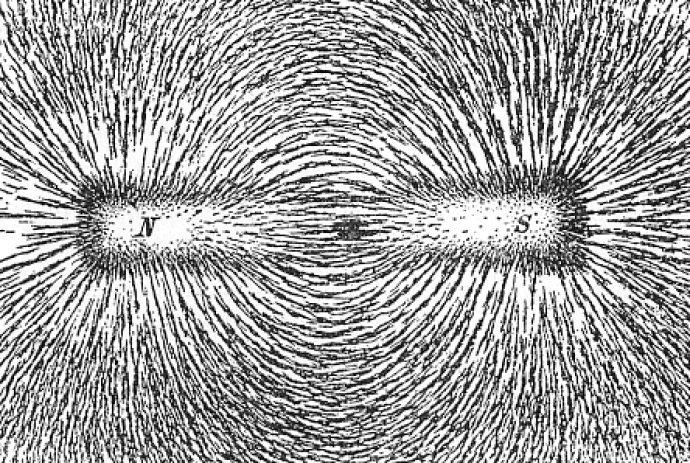 CreditThis work by Newton Henry Black is licensed under Creative Commons Zero v1.0 Universal
CreditThis work by Newton Henry Black is licensed under Creative Commons Zero v1.0 UniversalIron filings lining up along the magnetic field lines of a bar magnet. But it can also be seen at large distances, like around the Earth.
Image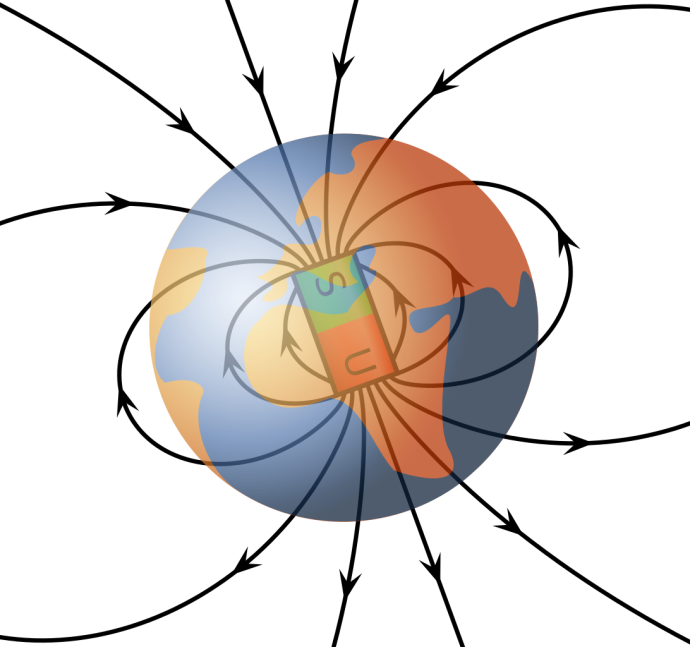 CreditThis work by Jiaminglimjm is licensed under Creative Commons Attribution Share Alike 4.0 International
CreditThis work by Jiaminglimjm is licensed under Creative Commons Attribution Share Alike 4.0 International- Magnetosphere
The magnetism of the Earth is stronger when you are in space. There is a region around the Earth which we call the magnetosphere. When particles from space arrive here, the magnetosphere protects the Earth, stopping them from hitting the surface.
Image CreditThis work by NASA is licensed under Creative Commons Zero v1.0 Universal
CreditThis work by NASA is licensed under Creative Commons Zero v1.0 UniversalAn artist's impression of the shape of the magnetosphere surrounding the Earth. But sometimes particles get trapped and move down the magnetic field lines, which enter the Earth at the North and South pole. As they do this, they generate light which we see as the aurorae or northern and southern lights.
Image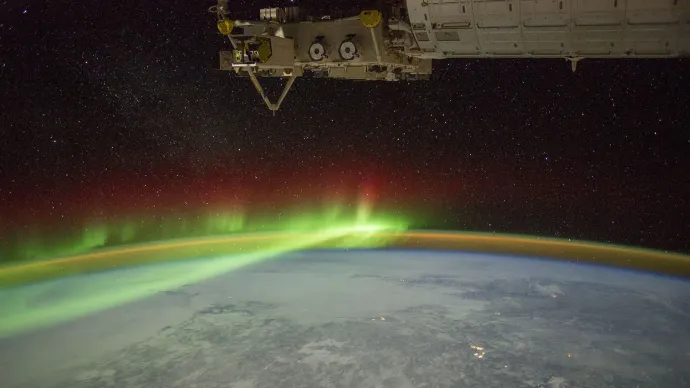 CreditThis work by NASA is licensed under Creative Commons Zero v1.0 Universal
CreditThis work by NASA is licensed under Creative Commons Zero v1.0 UniversalAurora as seen from the International Space Station. - Electromagnetism
Magnetism is connected to electricity. Electricity is the movement of charged particles from one place to another. The charged particles we use to create electricity in wires and electronics are called electrons. When we move charged particles, they create magnetism, each moving electron acting like a tiny magnet.
In science, these forces come together into what is known as electromagnetism; all the light we see interacts using this force, just like in the aurorae.
Image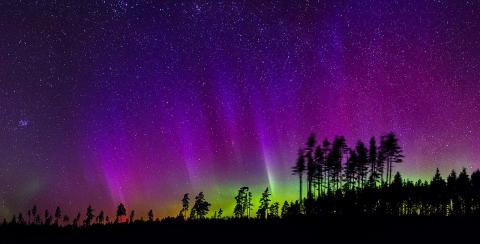 CreditThis work by Kristian Pikner is licensed under Creative Commons Attribution Share Alike 4.0 International
CreditThis work by Kristian Pikner is licensed under Creative Commons Attribution Share Alike 4.0 InternationalNot all materials are magnetic – they must have free electrons inside them. In the Earth, these moving electrons are in the molten metal found in the core. The flow of the molten metal creates the magnetosphere.
The magnetic north and south poles of the Earth are not in the same place as the true north/south, which align with the rotation of the Earth. The magnetic poles can also move slowly over time as the molten metal in the core moves around.
- Uses of Magnetism
We use magnets in everyday life – not just to stick things on the fridge door!
They are used in powerful hospital scanners to help doctors find problems in patients' bodies. We use magnets at recycling centres to separate the different types of waste. They are used in the home to control electric motors, like vacuum cleaners and washing machines.
One of the most impressive uses of magnets is in superfast trains, which hover above the ground using strong magnetic fields.
